Bower B. M.
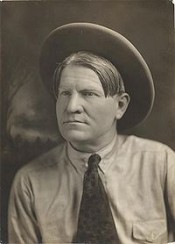
Charles Marion Russell (March 19, 1864, St. Louis, Missouri—October 24, 1926, Great Falls, Montana)[1], also known as C. M. Russell, was an artist of the American West. Russell created more than 2,000 paintings of cowboys, Indians, and landscapes set in the Western United States, in addition to bronze sculptures. Known as 'the cowboy artist'[2], Russell was also a storyteller and author. The C. M. Russell Museum Complex located in Great Falls, Montana houses more than 2,000 Russell artworks, personal objects, and artifacts. Russell's mural entitled Lewis and Clark Meeting the Flathead Indians hangs in the state capitol building in Helena, Montana. Russell's 1918 painting Piegans sold for $5.6 million dollars at a 2005 auction [3]. Art was always a part of Russell's life. Growing up in Missouri, he drew sketches and made clay figures of animals. Russell had an intense interest in the wild west and would spend hours reading about it. Russell would watch explorers and fur traders who frequently came through Missouri. Russell learned to ride horses at Hazel Dell Farm near Jerseyville, Illinois on a famous Civil War horse called "Great Britain". Russell's instructor was Col. William H. Fulkerson who had married into the Russell family. At the age of sixteen, Russell left school and went to Montana to work on a sheep ranch. In 1882, by the age of eighteen, Russell was working as a cattle hand. The harsh winter of 1886 and 1887 provided the inspiration for a painting that would give Russell his first taste of publicity. According to stories, Russell was working on the O-H Ranch in the Judith Basin of Central Montana when the ranch foreman received a letter from the owner, asking how the cattle herd had weathered the winter. Instead of a letter, the ranch foreman sent a postcard-sized watercolor Russell had painted of gaunt steer being watched by wolves under a gray winter sky. The ranch owner showed the postcard to friends and business acquaintances and eventually displayed it in a shop window in Helena, Montana. After this, work began to come steadily to the artist. Russell's caption on the sketch, "Waiting for a Chinook", became the title of the drawing, and Russell later created a more detailed version which is one of his best-known works. In 1896, Russell married his wife Nancy. In 1897, they moved from the small community of Cascade, Montana to the bustling county seat of Great Falls, where Russell spent the majority of his life from that point on. There, Russell continued with his art, becoming a local celebrity and gaining the acclaim of critics worldwide. As Russell kept primarily to himself, Nancy is generally given credit in making Russell an internationally known artist. She set up many shows for Russell throughout the United States and in London creating many followers of Russell. Russell the artist arrived on the cultural scene at a time when the "wild west" was being chronicled and sold back to the public in many forms, ranging from the dime novel to the wild west show and soon evolving into motion picture shorts and features of the silent era, the westerns that have become a movie staple. Russell was fond of these popular art forms, and made many friends among the well-off collectors of his works, including actors and film makers such as William S. Hart, Harry Carey, Will Rogers and Douglas Fairbanks. Russell also kept up with other artists of his ilk, including painter Edward "Ed" Borein and Will Crawford the illustrator. On the day of Russell's funeral in 1926, all the children in Great Falls were released from school to watch the funeral procession. Russell's coffin was displayed in a glass sided coach, pulled by four black horses.[4] A collection of short stories called Trails Plowed Under[5] was published a year after his death. Also, in 1929, Russell's wife, Nancy, published a collection of his letters in which was titled Good Medicine. In 1965, a high school was built on the north side of the Missouri River in Great Falls, Montana and named Charles M. Russell High School, in honor of Russell. Ian Tyson's 1987 album, Cowboyography, includes a song entitled "The Gift" telling the story of Russell. In 1991, Russell was inducted into the St. Louis Walk of Fame. Some of Russell's paintings were shown during the credits of the television series How the West Was Won. Along with Jeannette Rankin, the first female member of the United States Congress, Russell represents Montana in the National Statuary Hall Collection in the United States Capitol. The Charles M. Russell National Wildlife Refuge is named for Russell. A World War II Liberty Ship, SS Charles M. Russell, was named in his honor and launched in 1943 in Portland, Oregon Michael Nesmith, of Monkees fame, recorded a song entitled "Laugh Kills Lonesome" which was inspired by, and describes the contents of, a well-known Russell painting of the same name. Native Blackfeet folk singer Jack Gladstone wrote a song dedicated to Russell entitled "When the Land Belonged to God." The song also describes Russell's painting of the same name. At Couer d’Alene in July 2009, Russell’s 1907 watercolor and gouache The Truce went for $2,030,000 to an anonymous phone bidder. [6] Quest for the truth Grandson's attempt to verify authenticity of Russell painting takes 20 years; work may be priceless By Myles Murphy Ashland Daily Tidings After a 20-year quest to authenticate a family heirloom, Don Wolfington can finally rest easy. "I feel justified now," Wolfington said. The subject of the quest - an oil painting handed down from Wolfington's grandfather - is likely a rare work by Western painter Charles Marion Russell. It could be worth more than $100 million. C.M. Russell (1864-1926) is considered to be, along with his contemporary Frederic Remington, one of the fathers of American Western art. His works can sell for prices in the six-figure range, and undiscovered paintings are unusual. But Wolfington didn't know much about Russell when his grandfather opened up an old steamer trunk that had been off limits when he was about 14 years old. From between two protective pillows, his grandfather held up a picture of a starving steer in a field of snow surrounded by five circling wolves. "This is why I didn't want you getting into this trunk," his grandfather said. "This is by a famous painter." At the time the picture's value was mainly sentimental, a reminder of his grandfather's youth in Montana. His grandfather, George Iverson, told Wolfington he had won the painting in a poker game sometime between 1905 and 1908 when he was about 14. Back in those days, he was living near the Milner Ranch in Montana, where Russell worked as a cowboy. Iverson hopped a train to Seattle in 1918, storing the picture in the trunk between two pillows. "I think he sat on that trunk the whole way," Wolfington said. Iverson moved near Talent in 1947 and built a small cabin where the painting hung on the wall in a place of honor. After his grandfather died, the painting went to Wolfington's mother, who is still alive, and then she gave it to her son. One day in 1980, Wolfington was sitting at a restaurant with some friends who began to talk about the value of Russell prints that they knew of. "I told them, `If you've got Russell prints you think are valuable, you should see the real thing,'" Wolfington said. When he unveiled the painting to them, they were impressed. Wolfington was spurred to learn more about the painting and about Russell's work. Early attempts to authenticate the painting met with resistance in the small world of Russell art aficionados. Many Russell "experts," as collectors themselves, had a vested interest in denying the existence of additional Russell works which might lower the value of their own collections, according to Wolfington. "They just said it can't be real," he said. "They wouldn't even look at it. I said to myself, `What's going on?'" He might have given up if not for three valuable resources - a supportive friend, the Internet and an independent art authenticator. He met Clifford James of Talent, a fellow motorcycle enthusiast who was intrigued by the saga. "When he told me he'd been trying to authentic it for 10 years, it put a fire under me," James said. "This has been a tumultuous process, dealing with a small art world." James jumped on the Internet and soon became a Russell expert. He e-mailed officials at the Montana Historical Society, the Smithsonian Institute in Washington, D.C., and the Montana Governor's office, sending information and scans of the picture, looking for ways to authenticate the painting. "On the Internet, I made contacts in one day that 20 years ago would have taken three or four years to make," James said. People at the Smithsonian advised him to contact Stanford University, which gave him a list of authenticators. One of those listed, Graham Wilmott of Lakecreek east of White City, lived close enough for the two men to meet him in person. Wilmott is an authenticator, art historian, conservationist and artist who worked in the restoration and authentication field for more than 20 years. He restored and studied the painting, coming to the conclusion that it is consistent with Russell's work and his signature. The painting materials and techniques also were consistent with works of the time period. Wilmott is satisfied that the piece is authentic. "You only have to look at the cracking to see it's consistent with the time Russell was painting," Wilmott said. The picture itself, entitled "The last of 5000, Waiting for A Chinook" has a compelling story behind it. The first version Russell did was sketched on a small postcard as a message. A cowboy, Russell had been monitoring a herd of 5,000 steer during a long cold snap in Montana. He and another cowboy protected the herd as the elements and wolves took their toll. Steer were dying by the hundreds, and eventually the two men had to stop shooting the wolves and save their ammunition to defend themselves against the hungry predators. They watched as wolves took out the last of the 5,000. When the owner of the herd sent word to ask how his animals were, Russell had no words to express the devastation, and sent a small painting instead. The picture was later commissioned as a larger watercolor, and Wilmott believes Wolfington's oil painting was an earlier study Russell made in preparation for the watercolor.
do you like this author?
What readers are saying
What do you think? Write your own comment on this book!
write a commentWhat readers are saying
What do you think? Write your own comment on this author!
write a commentBook list

The Uphill Climb
Series:
Unknown
Year:
Unknown
Raiting:
5/5
Bertha Muzzy Bower/ Mrs. Sinclair/ Mrs. Cowan (1871-1940) was an author of western fiction. Among her works are: Chip, of the Flying U (1904), The Happy Family (1907), The Range Dwellers (1907), The Lure of the Dim Trails (1907), The Long Shadow (1909), The Lonesome Trail and Other Stories (1909), Good Indian (1912), Lonesome Land (1912), The Gringos (1913), The Uphill Climb (1913), Flying U Ranch (1914), Jean of the Lazy A (1915), The Flying U's Last Stand (1915), The Heritage of the Sioux (1916), The Phantom Herd (1916), The Lookout Man (1917), Starr, of the Desert (1917), Skyrider (1918), Cabin Fever (1918), The Thunder Bird (1919), The Quirt (1920), Cow-Country (1921), Casey Ryan (1921), The Trail of the White Mule (1922), The Parrowan Bonanza (1923), The Voice at Johnnywater (1923), The Bellehelen Mine (1924), The Eagle's Wing (1924), Meadowlark Basin (1925), Desert Brew (1925), and Van Patten (1926).
Show more
add to favoritesadd In favorites
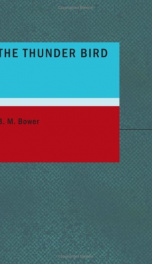
The Thunder Bird
Series:
Unknown
Year:
Unknown
Raiting:
4/5
Bertha Muzzy Bower/ Mrs. Sinclair/ Mrs. Cowan (1871-1940) was an author of western fiction. Among her works are: Chip, of the Flying U (1904), The Happy Family (1907), The Range Dwellers (1907), The Lure of the Dim Trails (1907), The Long Shadow (1909), The Lonesome Trail and Other Stories (1909), Good Indian (1912), Lonesome Land (1912), The Gringos (1913), The Uphill Climb (1913), Flying U Ranch (1914), Jean of the Lazy A (1915), The Flying U's Last Stand (1915), The Heritage of the Sioux (1916), The Phantom Herd (1916), The Lookout Man (1917), Starr, of the Desert (1917), Skyrider (1918), Cabin Fever (1918), The Thunder Bird (1919), The Quirt (1920), Cow-Country (1921), Casey Ryan (1921), The Trail of the White Mule (1922), The Parrowan Bonanza (1923), The Voice at Johnnywater (1923), The Bellehelen Mine (1924), The Eagle's Wing (1924), Meadowlark Basin (1925), Desert Brew (1925), and Van Patten (1926). --This text refers to an alternate Paperback edition.
Show more
add to favoritesadd In favorites
Book list

The Uphill Climb
Series:
Unknown
Year:
Unknown
Raiting:
5/5
Bertha Muzzy Bower/ Mrs. Sinclair/ Mrs. Cowan (1871-1940) was an author of western fiction. Among her works are: Chip, of the Flying U (1904), The Happy Family (1907), The Range Dwellers (1907), The Lure of the Dim Trails (1907), The Long Shadow (1909), The Lonesome Trail and Other Stories (1909), Good Indian (1912), Lonesome Land (1912), The Gringos (1913), The Uphill Climb (1913), Flying U Ranch (1914), Jean of the Lazy A (1915), The Flying U's Last Stand (1915), The Heritage of the Sioux (1916), The Phantom Herd (1916), The Lookout Man (1917), Starr, of the Desert (1917), Skyrider (1918), Cabin Fever (1918), The Thunder Bird (1919), The Quirt (1920), Cow-Country (1921), Casey Ryan (1921), The Trail of the White Mule (1922), The Parrowan Bonanza (1923), The Voice at Johnnywater (1923), The Bellehelen Mine (1924), The Eagle's Wing (1924), Meadowlark Basin (1925), Desert Brew (1925), and Van Patten (1926).
Show more
add to favoritesadd In favorites

The Thunder Bird
Series:
Unknown
Year:
Unknown
Raiting:
4/5
Bertha Muzzy Bower/ Mrs. Sinclair/ Mrs. Cowan (1871-1940) was an author of western fiction. Among her works are: Chip, of the Flying U (1904), The Happy Family (1907), The Range Dwellers (1907), The Lure of the Dim Trails (1907), The Long Shadow (1909), The Lonesome Trail and Other Stories (1909), Good Indian (1912), Lonesome Land (1912), The Gringos (1913), The Uphill Climb (1913), Flying U Ranch (1914), Jean of the Lazy A (1915), The Flying U's Last Stand (1915), The Heritage of the Sioux (1916), The Phantom Herd (1916), The Lookout Man (1917), Starr, of the Desert (1917), Skyrider (1918), Cabin Fever (1918), The Thunder Bird (1919), The Quirt (1920), Cow-Country (1921), Casey Ryan (1921), The Trail of the White Mule (1922), The Parrowan Bonanza (1923), The Voice at Johnnywater (1923), The Bellehelen Mine (1924), The Eagle's Wing (1924), Meadowlark Basin (1925), Desert Brew (1925), and Van Patten (1926). --This text refers to an alternate Paperback edition.
Show more
add to favoritesadd In favorites
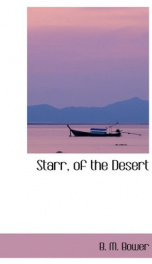
Starr, of the Desert
Series:
Unknown
Year:
Unknown
Raiting:
4/5
Peter finished refilling the prescription on which he was working and went out to see if he were needed in front. He sold a lip-stick to a pert miss who from sheer instinct made eyes at him and he wished that Helen May had such plump cheeks¿though he thanked God she had not the girl¿s sophisticated eyes. --This text refers to an alternate Paperback edition.
Show more
add to favoritesadd In favorites

Skyrider
Series:
Unknown
Year:
Unknown
Raiting:
0.5/5
This book was converted from its physical edition to the digital format by a community of volunteers. You may find it for free on the web. Purchase of the Kindle edition includes wireless delivery.
Show more
add to favoritesadd In favorites
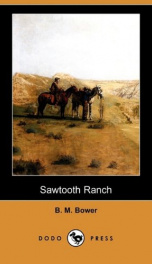
Sawtooth Ranch
Series:
Unknown
Year:
Unknown
Raiting:
3.5/5
Bertha Muzzy Bower/ Mrs. Sinclair/ Mrs. Cowan (1871- 1940) was an author of western fiction. She was one of the first women to make a career of crafting western stories. In 1888 she became a teacher in Grand Falls, Montana and she was married at the age of nineteen. Among her works are: Chip, of the Flying U (1904), The Happy Family (1907), The Range Dwellers (1907), The Lure of the Dim Trails (1907), The Long Shadow (1909), The Lonesome Trail and Other Stories (1909), Good Indian (1912), Lonesome Land (1912), The Gringos (1913), The Uphill Climb (1913), Flying U Ranch (1914), Jean of the Lazy A (1915), The Flying U's Last Stand (1915), The Heritage of the Sioux (1916), The Phantom Herd (1916), The Lookout Man (1917), Starr, of the Desert (1917), Skyrider (1918), Cabin Fever (1918), The Thunder Bird (1919), The Quirt (1920), Cow- Country (1921), Casey Ryan (1921), The Trail of the White Mule (1922), The Parrowan Bonanza (1923), The Voice at Johnnywater (1923), The Bellehelen Mine (1924), The Eagle's Wing (1924), Meadowlark Basin (1925), Desert Brew (1925), and Van Patten (1926).
Show more
add to favoritesadd In favorites
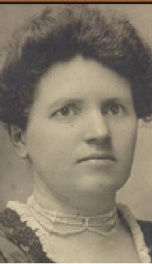
Rowdy of the Cross L
Series:
Unknown
Year:
Unknown
Raiting:
4/5
This book was converted from its physical edition to the digital format by a community of volunteers. You may find it for free on the web. Purchase of the Kindle edition includes wireless delivery.
Show more
add to favoritesadd In favorites
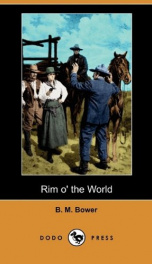
Rim o' the World
Series:
Unknown
Year:
Unknown
Raiting:
3/5
Bertha Muzzy Bower/ Mrs. Sinclair/ Mrs. Cowan (1871- 1940) was an author of western fiction. She was one of the first women to make a career of crafting western stories. In 1888 she became a teacher in Grand Falls, Montana and she was married at the age of nineteen. Around 1900 she started to write short stories, but her novel Chip of the Flying U (1904) was her first commercial success and is still said to be her most representative work. Between 1906 and until her death she wrote a total of sixty-eight novels, which are all based in the American west. Among her works are: The Happy Family (1907), The Range Dwellers (1907), The Long Shadow (1909), The Lonesome Trail and Other Stories (1909), Good Indian (1912), The Gringos (1913), Flying U Ranch (1914), Jean of the Lazy A (1915), The Phantom Herd (1916), The Lookout Man (1917), Skyrider (1918), Rim o' the World (1919), The Quirt (1920), Cow- Country (1921), The Trail of the White Mule (1922), The Parrowan Bonanza (1923), The Voice at Johnnywater (1923), The Bellehelen Mine (1924) and The Eagle's Wing (1924).
Show more
add to favoritesadd In favorites

The Range Dwellers
Series:
Unknown
Year:
Unknown
Raiting:
2.5/5
Bertha Muzzy Bower/ Mrs. Sinclair/ Mrs. Cowan (1871-1940) was an author of western fiction. Among her works are: Chip, of the Flying U (1904), The Happy Family (1907), The Range Dwellers (1907), The Lure of the Dim Trails (1907), The Long Shadow (1909), The Lonesome Trail and Other Stories (1909), Good Indian (1912), Lonesome Land (1912), The Gringos (1913), The Uphill Climb (1913), Flying U Ranch (1914), Jean of the Lazy A (1915), The Flying U's Last Stand (1915), The Heritage of the Sioux (1916), The Phantom Herd (1916), The Lookout Man (1917), Starr, of the Desert (1917), Skyrider (1918), Cabin Fever (1918), The Thunder Bird (1919), The Quirt (1920), Cow-Country (1921), Casey Ryan (1921), The Trail of the White Mule (1922), The Parrowan Bonanza (1923), The Voice at Johnnywater (1923), The Bellehelen Mine (1924), The Eagle's Wing (1924), Meadowlark Basin (1925), Desert Brew (1925), and Van Patten (1926).
Show more
add to favoritesadd In favorites
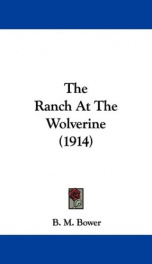
The Ranch at the Wolverine
Series:
Unknown
Year:
Unknown
Raiting:
3.5/5
A romantic story tells of the great lone places of the earth. By Bertha Muzzy Sinclair, best known under the pseudonym B. M. Bower, an American author of the 19th-20th centuries. Her literary heritage includes novels and fictional short stories about the American Old West.
Show more
add to favoritesadd In favorites
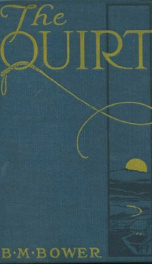
The Quirt
Series:
Unknown
Year:
Unknown
Raiting:
4.5/5
With Frontispiece by Anton Otto Fischer --This text refers to the Paperback edition.
Show more
add to favoritesadd In favorites
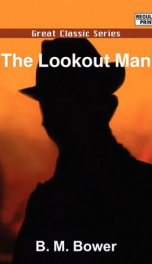
The Lookout Man
Series:
Unknown
Year:
Unknown
Raiting:
4/5
The revolving ones rebelled and in the scuffle some one lurched forward against the driver at a critical turn in the road throwing him against the wheel. --This text refers to an alternate Paperback edition.
Show more
add to favoritesadd In favorites
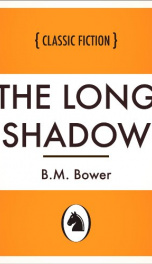
The Long Shadow
Series:
Unknown
Year:
Unknown
Raiting:
5/5
A vigorous Western story, sparkling with the free, outdoor, life of a mountain ranch. Its scenes shift rapidly and its actors play the game of life fearlessly and like men. It is a fine love story from start to finish.
Show more
add to favoritesadd In favorites
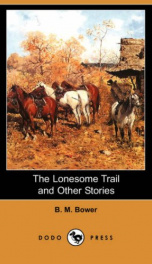
The Lonesome Trail and Other Stories
Series:
Unknown
Year:
Unknown
Raiting:
2.5/5
Bertha Muzzy Bower/ Mrs. Sinclair/ Mrs. Cowan (1871-1940) was an author of western fiction. Among her works are: Chip, of the Flying U (1904), The Happy Family (1907), The Range Dwellers (1907), The Lure of the Dim Trails (1907), The Long Shadow (1909), The Lonesome Trail and Other Stories (1909), Good Indian (1912), Lonesome Land (1912), The Gringos (1913), The Uphill Climb (1913), Flying U Ranch (1914), Jean of the Lazy A (1915), The Flying U's Last Stand (1915), The Heritage of the Sioux (1916), The Phantom Herd (1916), The Lookout Man (1917), Starr, of the Desert (1917), Skyrider (1918), Cabin Fever (1918), The Thunder Bird (1919), The Quirt (1920), Cow-Country (1921), Casey Ryan (1921), The Trail of the White Mule (1922), The Parrowan Bonanza (1923), The Voice at Johnnywater (1923), The Bellehelen Mine (1924), The Eagle's Wing (1924), Meadowlark Basin (1925), Desert Brew (1925), and Van Patten (1926).
Show more
add to favoritesadd In favorites

Lonesome Land
Series:
Unknown
Year:
Unknown
Raiting:
2/5
It could look as every story that comes later of the John McPhee’s books about Alaska compared to them. Like McPhee did in this book the wild nature of Alaska is described and also people which live there are described perfectly. The author puts into narration a lot of anecdotes and small stories about the people and some local places.
The book is a separate and finished work, but a lot of critics suggest getting acquainted with McPhee’s book first, and only then read this book, which is going to be classics.
Show more
add to favoritesadd In favorites
The book is a separate and finished work, but a lot of critics suggest getting acquainted with McPhee’s book first, and only then read this book, which is going to be classics.
Show more
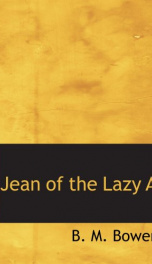
Jean of the Lazy A
Series:
Unknown
Year:
Unknown
Raiting:
3.5/5
Bertha Muzzy Bower/ Mrs. Sinclair/ Mrs. Cowan (1871-1940) was an author of western fiction. Among her works are: Chip, of the Flying U (1904), The Happy Family (1907), The Range Dwellers (1907), The Lure of the Dim Trails (1907), The Long Shadow (1909), The Lonesome Trail and Other Stories (1909), Good Indian (1912), Lonesome Land (1912), The Gringos (1913), The Uphill Climb (1913), Flying U Ranch (1914), Jean of the Lazy A (1915), The Flying U's Last Stand (1915), The Heritage of the Sioux (1916), The Phantom Herd (1916), The Lookout Man (1917), Starr, of the Desert (1917), Skyrider (1918), Cabin Fever (1918), The Thunder Bird (1919), The Quirt (1920), Cow-Country (1921), Casey Ryan (1921), The Trail of the White Mule (1922), The Parrowan Bonanza (1923), The Voice at Johnnywater (1923), The Bellehelen Mine (1924), The Eagle's Wing (1924), Meadowlark Basin (1925), Desert Brew (1925), and Van Patten (1926). --This text refers to an alternate Paperback edition.
Show more
add to favoritesadd In favorites
What readers are saying
What do you think? Write your own comment on this author!
write a commentif you like Bower B. M. try:
readers also enjoyed
What readers are saying
What do you think? Write your own comment on this author!
write a commentGenre
if you like Bower B. M. try:
readers also enjoyed
Do you want to exchange books? It’s EASY!
Get registered and find other users who want to give their favourite books to good hands!

